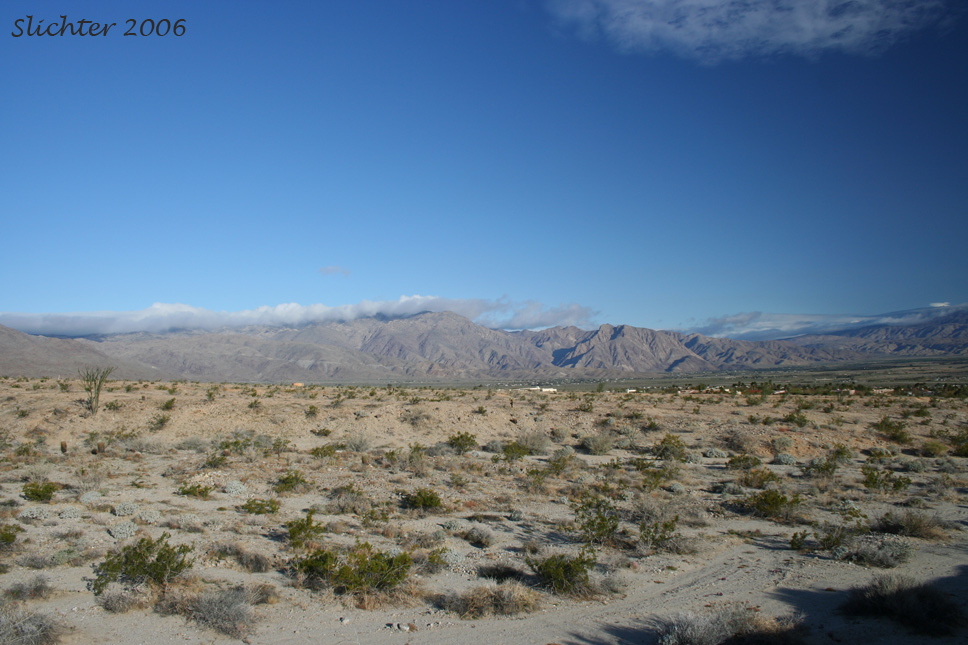

Deserts are regions of very low rainfall and are typically found in the rainshadow of mountain ranges. Often the region lacks significant vegetation, except that which grows and reproduces quickly after infrequent rainstorms, then dies back as the region drys out. In those desert areas which get slightly more annual precipiation, low shrubs and cactuses dominate. These tend to have thick stems, waxy waterproof coverings (to prevent water loss) and may loose their leaves during dry spells (again to prevent water loss). A rich diversity of wildflowers appear after rains and disappear within weeks as the moisture disappears.
Rainfall:
Average Monthly Rainfall Range: 0-20 mm
Most deserts get very little precipiation throughout the year, although some get small amounts of rain or snow during short rainy seasons.
Temperature:
Average Monthly Temperature Range: 10-35 C.
Temperatures in the deserts tend to see a wide flucuation of temperature during the course of one day since there is little vegetation to trap heat. Summers are hot while winters are cool or cold.
Threats to the Desert:
1) Conversion of desert lands to farmland (with irrigation).
2) Loss of water for vegetation and wildlife as water tables lower as cities and farms use the water for their own use.
3) Conversion of desert lands to city uses (see southwestern United States).

[Tropical Rainforest] [Temperate Deciduous Forest] [Temperate Grasslands] [Chaparral/Shrublands] [Desert] [Tundra]